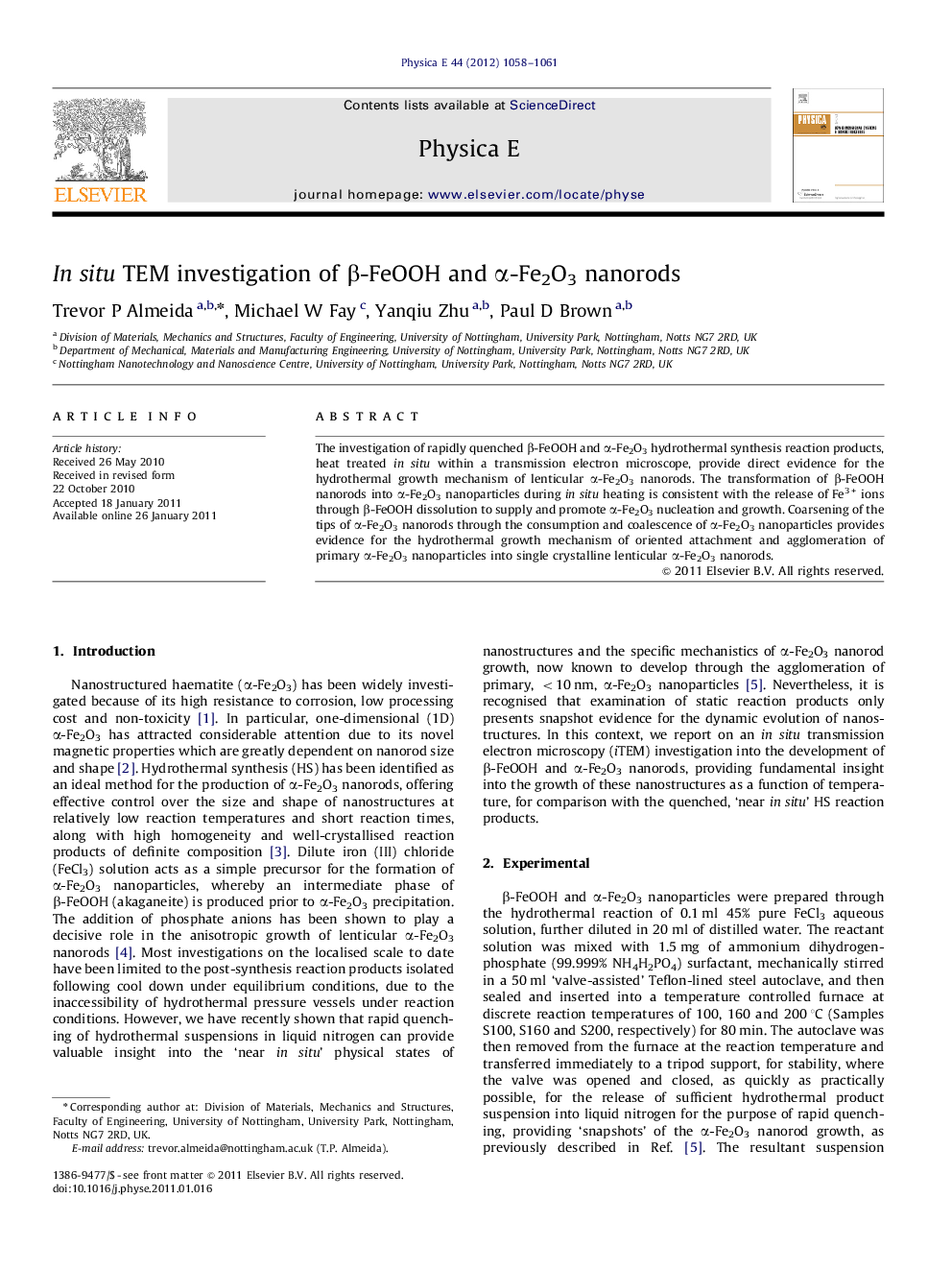| Article ID | Journal | Published Year | Pages | File Type |
|---|---|---|---|---|
| 1544893 | Physica E: Low-dimensional Systems and Nanostructures | 2012 | 4 Pages |
The investigation of rapidly quenched β-FeOOH and α-Fe2O3 hydrothermal synthesis reaction products, heat treated in situ within a transmission electron microscope, provide direct evidence for the hydrothermal growth mechanism of lenticular α-Fe2O3 nanorods. The transformation of β-FeOOH nanorods into α-Fe2O3 nanoparticles during in situ heating is consistent with the release of Fe3+ ions through β-FeOOH dissolution to supply and promote α-Fe2O3 nucleation and growth. Coarsening of the tips of α-Fe2O3 nanorods through the consumption and coalescence of α-Fe2O3 nanoparticles provides evidence for the hydrothermal growth mechanism of oriented attachment and agglomeration of primary α-Fe2O3 nanoparticles into single crystalline lenticular α-Fe2O3 nanorods.
Research highlights► Rapidly quenched β-FeOOH and α-Fe2O3 hydrothermal synthesis reaction products. ► In situ heating of β-FeOOH and α-Fe2O3 nanostructures within a TEM. ► Phase transformation into α-Fe2O3 via Fe3+ supply from β-FeOOH dissolution. ► Growth of α-Fe2O3 nanorods through the coalescence of α-Fe2O3 nanoparticles. ► In situ TEM provides evidence for the growth mechanism of α-Fe2O3 nanorods.
